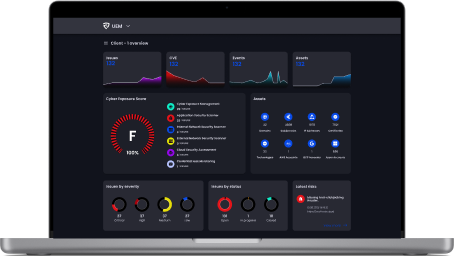SSRF
How SSRF Works?
SSRF attacks typically exploit functionalities in web applications that allow the server to make HTTP requests to other resources. By manipulating input parameters, attackers can trick the server into making unintended requests to internal services, cloud metadata endpoints, or external systems. SSRF can be initiated via URL parameters, file uploads, or API calls.
Examples of SSRF Vulnerability
- SSRF via URL Parameter
Scenario: An application fetches remote content based on a user-provided URL parameter without proper validation.
Request Example:
GET /fetch?url=http://internal-service.local/data HTTP/1.1
Host: example.com
Host: example.com
Response: The server fetches and returns data from http://internal-service.local/data, potentially exposing sensitive internal information.
Explanation:
In this scenario, the web application accepts a URL parameter (url) from user input without adequate validation. This allows an attacker to manipulate the url parameter to point to internal resources, such as http://internal-service.local/data. Consequently, the server makes an HTTP request to http://internal-service.local/data, potentially exposing sensitive internal information accessible to the server.
- SSRF via File Upload
Scenario: An attacker uploads a file containing malicious XML or JSON data that triggers SSRF when parsed by the server.
{
"image": "https://internal-server.local/secret-image.png"
}
"image": "
}
Server-Side Parsing: Upon receiving the uploaded file, the server parses its content, extracting and interpreting the JSON data. During this parsing process, the server encounters the URL (https://internal-server.local/secret-image.png) embedded in the JSON structure. As a result, the server initiates an HTTP request to https://internal-server.local/secret-image.png, attempting to fetch the confidential image specified by the attacker.
Explanation:
Here, the attacker leverages the file upload functionality to inject a crafted URL (https://internal-server.local/secret-image.png) into the application’s data flow. The server’s parsing of the uploaded file leads to an unintended SSRF attack, where the server retrieves and potentially exposes sensitive content as requested by the attacker.
Impacts of SSRF
SSRF vulnerabilities can have profound implications for the security and integrity of web applications and infrastructure:
- Data Exposure: SSRF can lead to the unauthorized disclosure of sensitive information stored on internal services. Attackers can exploit SSRF to retrieve data such as user credentials, database contents, or proprietary information accessible from the server.
- System Compromise: By exploiting SSRF, attackers can compromise vulnerable services that are accessible from the server. This can include services running on internal networks or cloud environments, potentially leading to complete system compromise or unauthorized access to critical resources.
- Cloud Metadata Abuse: Attackers can abuse SSRF to access cloud instance metadata services like AWS EC2 metadata or OpenStack APIs. This metadata often contains sensitive information about the server instance, network configurations, and security credentials, which can facilitate further attacks or unauthorized actions.
- Infrastructure Manipulation: SSRF vulnerabilities can allow attackers to manipulate server-side functionalities. This manipulation can range from unauthorized access to administrative interfaces, altering server configurations, to initiating actions that disrupt or degrade server performance.
Remediation of SSRF
To effectively mitigate SSRF vulnerabilities, organizations should implement a combination of preventive measures and proactive security practices:
- Input Validation: Implement strict validation and sanitization of input parameters, particularly URLs and file uploads, to prevent attackers from injecting malicious payloads or URLs that initiate SSRF attacks.
- Whitelisting: Restrict server-side requests to trusted domains or IP addresses through comprehensive whitelisting. This approach ensures that only validated and authorized requests are processed by the server, reducing the risk of SSRF exploitation.
- Use of Safe APIs: Prefer APIs and service integrations that enforce strict access controls and do not allow direct access to internal resources. Secure APIs should authenticate and authorize requests based on least privilege principles, minimizing the attack surface for SSRF vulnerabilities.
- Network Segmentation: Implement network segmentation to isolate sensitive services and resources from publicly accessible servers. This segregation limits the impact of SSRF attacks by restricting the attacker’s ability to pivot from compromised servers to critical infrastructure.
- Monitor Outbound Traffic: Deploy comprehensive logging and monitoring solutions to detect and analyze outbound traffic from the server. Monitor for anomalies or suspicious SSRF attempts, such as requests to internal IP addresses, unusual URL schemas (e.g., file://), or unexpected destinations.
Conclusion
Server-Side Request Forgery (SSRF) poses significant risks to the security of web applications and infrastructure by allowing attackers to manipulate server-side requests and access sensitive resources. The examples presented demonstrate how SSRF can be exploited through URL parameters, file uploads, and API calls, potentially leading to data exposure, system compromise, and abuse of cloud metadata.
To mitigate SSRF vulnerabilities effectively, organizations must adopt proactive measures such as input validation, whitelisting of trusted domains, and implementing secure APIs with strict access controls. Network segmentation and robust monitoring of outbound traffic are also crucial to detect and respond to SSRF attempts promptly.
Ready to see for yourself?
Test drives all platform features for yourself. No commitment and No credit card!




.svg)
.svg)
.svg)
.svg)



.svg)
.svg)
.svg)
.svg)
.svg)
.svg)
.svg)

